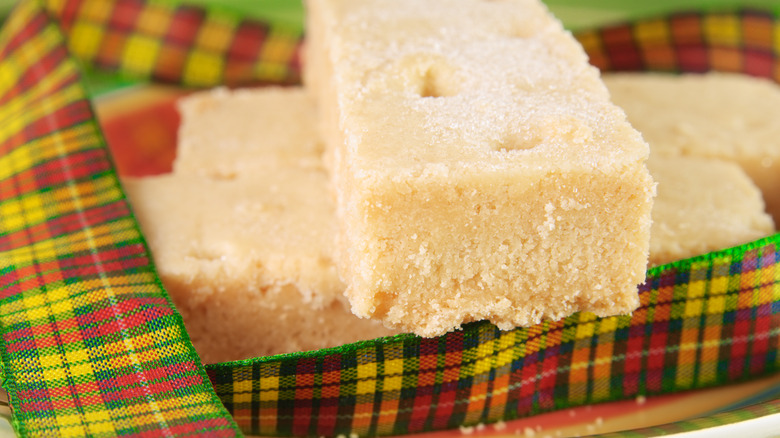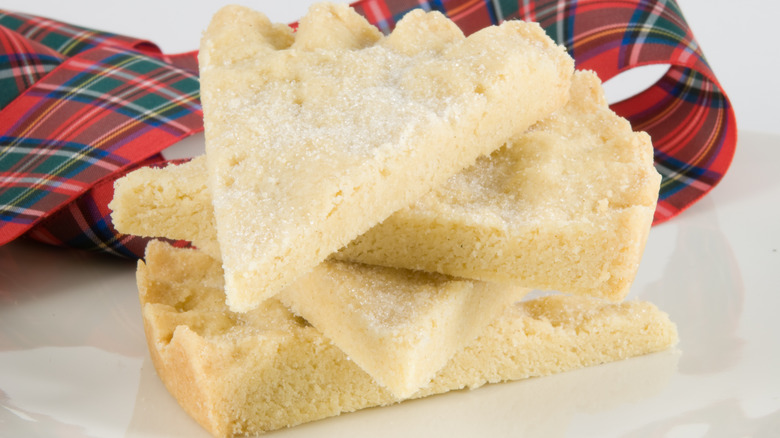Is There A Difference Between Scottish Shortbread And Regular Shortbread?
Despite being from the same island as the Britons (and the Welsh), Scotland has its own totally unique culture, history, language, and cuisine. Though the Roman Empire heavily influenced the development of British food when the Romans occupied England, they never got very far into Scotland — heck, the Romans even built Hadrian's Wall to deter the Scots from England. Since the British were the dominant empire in the world for a long time, one might naturally assume they originated popular dishes that are commonly found in English cuisine.
So if you hear the term "Scottish shortbread," you might think it's a different version of the shortbread you're familiar with, right? Well ... actually, no. "Shortbread" is just Scottish shortbread; they're one and the same. While the recipe has changed throughout its history, and there is a version of shortbread from Ireland, the original shortbread you're familiar with comes from Scotland.
Shortbread has an amazingly long history
Though people always seem to think of haggis (even though its origins aren't Scottish) when the subject of Scottish food comes up, shortbread may be the nation's signature dish. Its history is over a millennia old, dating back to the Middle Ages tradition of "biscuit bread," whereby excess dough was left in an oven on low heat until it hardened. Over time, the yeast in the recipe was replaced with butter (probably thanks to cultural exchanges that occurred as part of Scotland's long history with France), and shortbread became a recipe all of its own. That's actually where the name "shortbread" comes from: it has a crumbly (or "short") texture thanks to its ratio of one part sugar to two parts butter.
Because of the cost of butter, though, it was long considered a special occasion food and given rarefied regard. This status was bolstered by Mary Queen of Scots' love of shortbread. In fact, cooks in Mary's court during the mid-16th century are sometimes credited with the creation of modern shortbread as it transitioned toward its current buttery state. From Scotland, the treat not only traveled south to England and west to Ireland, but also across the Atlantic with Scottish settlers in the American South — which is why shortbread is a traditional part of American southern cuisine to this day.
Irish shortbread is distinct from Scottish shortbread
There isn't really an English version of shortbread; the version the British use is just classic Scottish shortbread from which the word "Scottish" has been shorn. There is, however, a type of Irish shortbread that's similar yet distinct from the more classic version. Irish shortbread not only sometimes changes up the butter-to-sugar ratio (possibly going with 2/3 a cup of sugar to 1 cup of butter), but also adds cornstarch in place of some of the flour present in the traditional recipe. As cornstarch is a potent thickener relative to flour, this creates a denser cookie.
Whichever version of shortbread you prefer, though, the original — which is often just called "shortbread" — came from Scotland. So next time you sit down to enjoy a delicious crumbly confection, be sure to thank the Scots for coming up with it in the first place.


